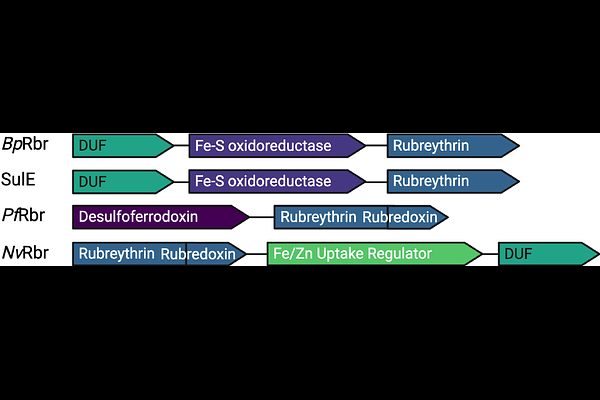Burkholderia pseudomallei rubrerythrin promiscuously binds metals in a structurally pre-formed bimetallic binding site

Burkholderia pseudomallei rubrerythrin promiscuously binds metals in a structurally pre-formed bimetallic binding site
Budziszewski, G. R.; Lynch, M. L.; Snell, M. E.; Monteiro, D. C.; Bowman, S. E.
AbstractRubrerythrins are a group of proteins within the Ferritin-like superfamily that display a defining four-helix bundle domain. They also show multiple structural features that are crucial to their functionality as iron storage proteins and in detoxification and oxidative stress response. Here we investigate rubrerythrin (Rbr) in multiple metalated states, from the pathogen Burkholderia pseudomallei (Bp). We use X-ray crystallography for structure determination of Rbr to probe the capacity and specificity of metal binding. BpRbr lacks the rubredoxin moiety found in canonical Rbrs from anaerobic lineages, and we demonstrate that BpRbr also possesses a domain-swapped dimer, which has functional implications for its putative role in oxidative stress response. We also carry out in crystallo spectroscopic assessment of BpRbr with various metals, using energy dispersive X-ray (EDX) spectroscopy. We observe that samples can contain metals other than those supplied in crystallization conditions, and developed a strategy of utilizing EDX spectroscopy to select those samples with single metal incorporation for downstream diffraction data collection. Our work underscores the importance of spectroscopic probing for definitive metal identification and characterization.